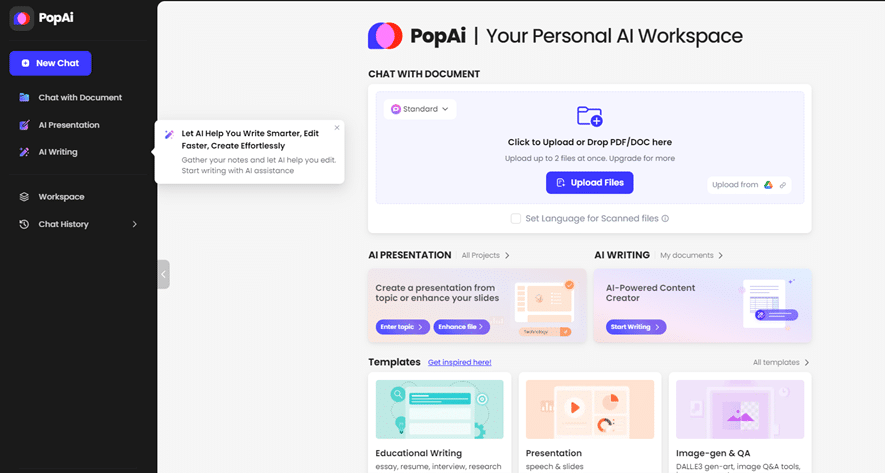How Long Should Your Blog Articles Be in 2024?

In the world of blogging, one question weighs heavily on every writer’s mind: how long should my blog posts be? Determining the ideal length for articles is crucial for engaging readers, optimizing for search engines, and ensuring your content stands out.
As we progress into 2024, creating quality blog content that resonates with your audience is more important than ever. In this blog post, we’ll cover all the details to help you find the ideal word count for your articles.
The Importance of Blog Post Length in 2024
With ever-evolving algorithms and reader preferences, blog post length holds renewed significance looking ahead to 2024. Google has indicated longer, in-depth articles may have an edge from an SEO standpoint.
Studies show readers favor more comprehensive content when searching for information online. Ultimately though, the ideal length depends on your specific goals and audience. Using a free sentence rewriter can also help refine your content to better match user intent and improve clarity.
Defining that sweet spot where engagement, search visibility, and reader experience intersect will be vital. Though predictions abound, the data reveals there is no universal ‘perfect’ article length. Rather, striking the right balance for each piece of content based on intent and viewers is key. As 2024 approaches, nailing down what works best for your blog will ensure your content remains compelling.
The Data Behind Ideal Blog Post Lengths
-
Optimal blog post length for various content types
The optimal blog post length varies significantly based on the type of content you produce. Research into top-performing articles reveals ideal word counts for different material.
For instance, blog posts providing step-by-step tutorials or “how-to” advice average 1,800+ words. More in-depth guides and resources work best between 2,250-2,500 words. List posts and quick tips perform well at 650-750 words. Overall, articles under 300 words now struggle to rank with search engines.
-
The impact of word count on SEO
Clearly, one-size-fits-all advice no longer applies with blog length recommendations in 2024. Creating content tailored to your niche and audience intent matters more. Though longer content may have some SEO advantages, quality trumps quantity. Well-researched articles with the right informational density for the topic will go further.
The impact of word count on SEO cannot be understated either. Google has specifically stated longer, useful content is a positive ranking factor. Posts over 1,500 words tend to snag more featured snippets as well.
-
Pros and cons of long-form blog posts
However, rambling on just to chase a word count can backfire. Search engines now detect “fluff” and may actually downgrade overly wordy posts lacking substance. Once again, creating genuinely valuable content optimized for searcher intent – rather than keyword quotas – is the safest path forward.
Long-form blog posts have both upsides and downsides to consider. Packing posts with information helps establish authority and depth on a subject. It also enables elaborating to cater to different learning styles. Nevertheless, blog length always depends somewhat on audience expectations. Adhere to concision when readership is inclined to scannability.
Determining the Ideal Blog Post Length for Your Content
With shifting reader preferences and search engine capabilities, defining the optimal article length for your website in 2024 is essential. Rather than getting caught up in specific metrics, consider these key factors:
-
Establishing Your Goal
Before determining post length, establish what you want to achieve. Is the aim high traffic, solid lead generation, or advertising revenue? Perhaps it is cementing authority or brand awareness instead? Defining this upfront clarifies what style and depth of content best fits.
For example, detailed analyses may suit an influence-focused goal better than quick hit posts. Meanwhile, listicles and reviews nicely serve commercial intents. Identify the outcome you want first, then shape content accordingly.
-
Defining Your Audience
Likewise, carefully profile your target reader demographic when plotting article length. Analyze what content style best resonates. User behavior analytics tools can reveal average session duration and scroll depth. If visitors tend to deeply engage, do not shy from long-form posts.
However, if your audience prefers skimming, be more judicious with word count. Similarly, adapt article length based on reader sophistication. For specialist topics, substantial analysis may be expected. With mainstream subjects, concision often serves better.
-
Focusing On Search Intent Rather Than Word Count
Perhaps most crucially, blog post length should stem from search intent rather than an arbitrary target. Assess keywords and map out informational needs, then craft articles fulfilling that adequately. Neither overstuff articles just to inflate page length nor leave readers lacking details.
If a topic requires step-by-step guidance, ensure adequate information. For quick reference queries, be concise and scannable. Constantly evaluate searcher motivation when shaping content rather than relying on guessed article length ideals.
-
Using AI to Estimate Word Count and Create Article Outlines
AI advancements help streamline crafting blog posts optimized for search and visitors. Rather than manually guessing article length, use AI content tools like PopAi pro to estimate word counts. By inputting article outlines and key points, word processors can predict optimal overall length.
These AI writing assistants also build fully-fledged content outlines from basic prompts. This takes the heavy lifting out of planning blog structure and flow before drafting. Automated insights make aligning articles to audience needs much simpler too.

Conclusion
Defining the ideal blog post word count is a nuanced affair, depending hugely on goals, audiences and topics. While no definitive perfect article length exists in 2024, creating content to serve needs is key. Adapt to searcher intent through keyword research and user behavior analytics when shaping article direction. Then utilize AI estimation and outlining to streamline informed content creation using data, not guessing.


